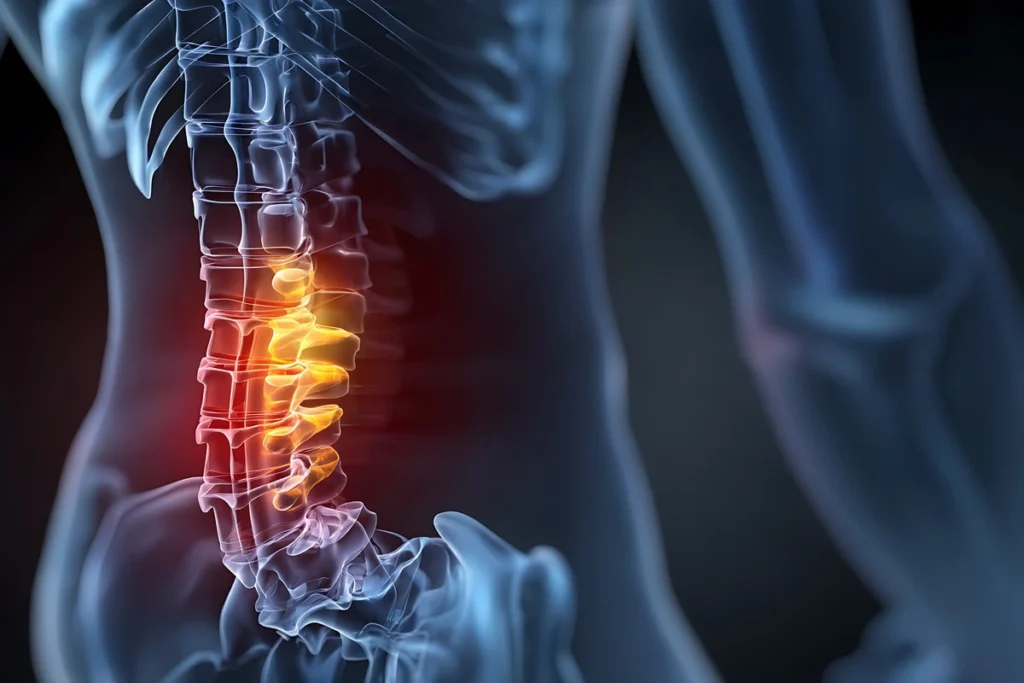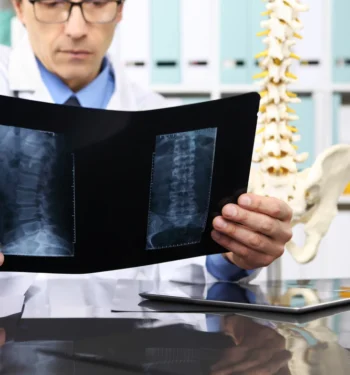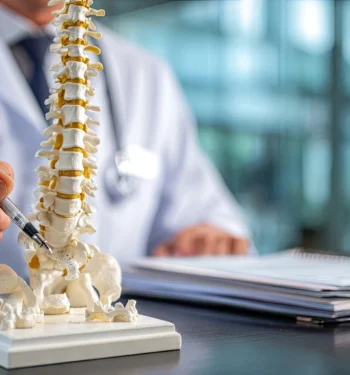
Introduction: Understanding Neurogenic Claudication From Spinal Stenosis
Neurogenic claudication is a common and often misunderstood condition that results from spinal stenosis, which is the narrowing of spaces in the spine leading to nerve compression. This condition can significantly impact mobility and quality of life, but understanding what it means is the first step toward reclaiming hope and function. By seeking the right healthcare support, many individuals have discovered effective ways to manage their symptoms and improve their overall well-being. Exploring options for Spinal Stenosis Treatment can be an important part of this journey toward relief and restored mobility.
Spinal stenosis affects a substantial number of adults, especially as we age. It can lead to pain, numbness, or weakness in the lower body due to pressure on nerves — a group of symptoms called neurogenic claudication. The daily reality of living with neurogenic claudication can be challenging not only for patients but also for their families, who witness their loved ones’ struggles and reduced independence. The impact goes beyond physical discomfort, influencing emotional wellness and activity participation.
Despite these challenges, many patients find their journeys uplifting and transformative thanks to dedicated healthcare providers and interventional pain management physicians. With a comprehensive care plan, numerous patients have regained their mobility, returned to cherished activities, and experienced a renewed sense of hope. Stories of recovery and resilience serve as powerful reminders that a diagnosis of spinal stenosis or neurogenic claudication is not the end of the road. Rather, it is a call to seek expert care and fight for a better tomorrow.
If you or a loved one is facing these symptoms, remember you are not alone. Ask your doctor about Goodman Campbell for comprehensive spine care, and start your journey toward recovery with a team dedicated to your well-being.
What Are the Symptoms of Spinal Stenosis Claudication?
Spinal stenosis with neurogenic claudication often presents with a collection of symptoms that can be both distressing and limiting. The classic signs include pain, numbness, tingling, or weakness in one or both legs when standing or walking, but tend to ease when you sit down or lean forward. These distinctive patterns help doctors and patients recognize neurogenic claudication symptoms versus other causes of leg pain, giving hope for diagnosis and relief.
People living with symptoms of spinal stenosis with neurogenic claudication frequently describe a deep ache, pressure, or even electric-like discomfort that begins after a few minutes of walking or standing. This pain often starts in the lower back and radiates into the buttocks, thighs, or calves, and is typically relieved by rest or by changing posture, such as leaning over a cart or sitting. Unlike many other conditions, simply stopping activity and sitting down can cause a dramatic improvement, allowing patients to continue daily errands or walks in short bursts.
It’s important to differentiate neurogenic claudication symptoms from those seen in vascular issues or sciatica. Vascular claudication, for instance, is related to blood flow problems and usually does not improve as quickly or consistently with postural changes as neurogenic claudication does. Additionally, sciatica often involves sharp, shooting leg pain with or without back pain, but is not typically posture-dependent.
How Mobility Limitations Affect Daily Life
The impact of mobility limitations from neurogenic claudication can be profound. Many people find that routine activities, such as shopping, walking the dog, and gardening, become difficult or impossible due to the need for frequent breaks and fear of sudden weakness. These ongoing challenges can affect not only physical health, but also emotional well-being and independence.
Yet, by understanding and identifying these symptoms early, you and your loved ones can work together to seek expert guidance and solutions. Every journey begins with hope and the right information. For compassionate, specialized care and a clear path forward, ask your doctor about Goodman Campbell’s comprehensive approach to diagnosing and treating spinal stenosis with neurogenic claudication.
What Is the Difference Between Neurogenic Claudication and Spinal Stenosis?
The difference between neurogenic claudication and spinal stenosis lies in their definitions and roles in the body. Spinal stenosis refers to a structural condition in which the spaces within your spine become narrowed, usually compressing the nerves that travel through the spine. Neurogenic claudication is a key symptom or clinical syndrome caused by this nerve compression, leading to noticeable discomfort and mobility issues. While spinal stenosis is the underlying anatomical issue, neurogenic claudication is what patients actually experience day-to-day when the nerve compression affects their ability to walk, stand, or engage in normal activities.
Spinal stenosis can develop anywhere along the spine, but it most commonly affects the lower back (lumbar spine). It is often a result of age-related changes, such as thickening ligaments, bone spurs, or degenerative disc disease. This narrowing of the spinal canal itself does not always cause symptoms. In some individuals, the process is silent. However, as the narrowing progresses and nerves are compressed, signs of neurogenic claudication may develop.
Neurogenic claudication specifically refers to the pain, tingling, numbness, or weakness that people may experience primarily in the legs, buttocks, or lower back when standing or walking. These symptoms generally improve when sitting or bending forward. This hallmark pattern helps physicians distinguish neurogenic claudication from other sources of leg pain and numbness.
How Does Neurogenic Claudication Differ From Radiculopathy?
While both neurogenic claudication and radiculopathy result from nerve issues in the spine, they are not the same. Radiculopathy is most often due to direct compression or irritation of a specific nerve root, often causing sharp, shooting pain down one leg (or arm, for cervical cases) that follows a particular nerve’s distribution. Neurogenic claudication, in contrast, is usually caused by a broader compression of several nerves in the spinal canal and presents as more diffuse, bilateral leg discomfort that worsens with activity and eases with rest or posture change.
What About Vascular Claudication?
Vascular claudication is caused by circulation problems (poor blood flow due to narrowed arteries), rather than nerve compression. While its symptoms can seem similar (leg pain with walking), vascular claudication typically persists even when standing still, and is relieved best by resting rather than altering posture. Proper diagnosis is essential because the underlying causes and treatments are different. If you or a loved one is experiencing these symptoms, reaching out to a team with expertise in spinal disorders can set you on the right path.
Recognizing When Spinal Stenosis Leads to Disability
When lumbar stenosis with neurogenic claudication progresses, it may significantly affect daily life, making walking or standing for even brief periods difficult. In some cases, people require assistive devices like canes or walkers, and activities such as shopping, gardening, or simply moving around the home become challenging. This is when spinal stenosis may be considered functionally disabling and signals that more comprehensive evaluation and care are needed. For compassionate, patient-centered care, be sure to ask your doctor about Goodman Campbell and the hope that expertise and individualized treatment can bring.
How Serious Is Neurogenic Claudication, and Is It a Disability?
Neurogenic claudication caused by lumbar spinal stenosis can significantly affect your mobility, comfort, and daily living. The seriousness of the condition varies from person to person, depending on the degree of stenosis and nerve compression. For some, the symptoms may be mild and manageable, while for others, neurogenic claudication can become a major barrier to independence and quality of life, sometimes even meeting criteria for disability.
How Serious Is Neurogenic Claudication?
Neurogenic claudication is considered a serious neurological symptom because it can consistently interfere with your ability to walk, stand, or perform everyday tasks without pain or weakness. People often notice that even short walks or standing in line can trigger aching, numbness, or tingling in the thighs, buttocks, or legs, making social engagement, working, and enjoying hobbies much more difficult. Over time, without management, symptoms can worsen and lead to reduced physical fitness and social isolation. Yet, many patients find hope in the array of treatments available and in the support from dedicated medical teams.
Early recognition of worsening symptoms, such as declining walking distance or increased falls, is important. These signs suggest that the spinal nerves are under more pressure, which can impact independence and safety. Some patients may find that their lifestyle has shifted, requiring the use of assistive devices or needing help with daily care. However, compassionate care and timely intervention can often greatly improve or even reverse these limitations.
Is Lumbar Stenosis With Neurogenic Claudication a Disability?
Whether lumbar stenosis with neurogenic claudication qualifies as a disability depends on the degree to which it restricts day-to-day activities. In the legal or medical sense, a condition is disabling if it severely limits your ability to work, care for yourself, or perform essential functions of daily life. If walking, standing, and self-care become extremely difficult or impossible without frequent rest or assistance, this may be considered a disability. It is important for patients and families to document these limitations for their healthcare team.
Remember, a diagnosis is not the end of your story. Many individuals find that, with help from interventional pain management specialists, physical therapy, and comprehensive care, remarkable gains in strength, comfort, and independence are possible. Advances in both nonsurgical and surgical care have restored hope for thousands, transforming disability into a new chapter of resilience and restored quality of life.
Living Life Fully With Neurogenic Claudication
Facing the challenges of neurogenic claudication can feel overwhelming at first, but you are not alone. With the right medical team and a hopeful mindset, there are many possibilities for improved mobility and happiness. Take the first step and ask your doctor about Goodman Campbell, where compassionate care empowers patients and families on their journey back to independence.
How Is Neurogenic Claudication Treated in Spinal Stenosis?
Neurogenic claudication treatment in the context of spinal stenosis focuses on relieving nerve compression and restoring mobility to help patients reclaim their daily activities and confidence. The best approach begins with conservative measures, but when those are not effective, advanced therapies, including involvement from interventional pain management physicians and, in some cases, surgery, may be recommended. An individualized, patient-centered strategy is the key to maximizing outcomes and minimizing discomfort for each person seeking relief.
What Are Conservative Options for Neurogenic Claudication?
Conservative management of neurogenic claudication often starts with tailored physical therapy, where trained therapists guide patients through specific exercises to strengthen core and back muscles, promote flexibility, and improve posture. Walking routines, activity modification, and education about proper body mechanics form the foundation of many treatment plans. These nonsurgical options frequently help improve symptoms and provide the tools to manage everyday challenges.
Medications for Nerve and Inflammation Management
When physical therapy alone is not enough, medications may be introduced to target nerve irritation and inflammation associated with lumbar stenosis with neurogenic claudication. The goal is to reduce pain and enhance function so you can re-engage with your favorite activities safely and comfortably.
The Role of Interventional Pain Management Physicians
If conservative methods do not provide adequate relief, interventional pain management physicians can offer targeted therapies such as epidural steroid injections. These precise procedures deliver medication directly to the source of nerve inflammation, often providing substantial symptom relief. Such doctors are skilled in assessing your unique situation and recommending the safest, most effective interventions while keeping your overall well-being at the forefront of care.
When Is Surgery Recommended?
In some cases, such as when symptoms continue to significantly interfere with walking and daily living, your care team may discuss surgical options for neurogenic claudication treatment. Standard surgeries may include laminectomy, lumbar decompression, and fusion, or disc replacement procedures, depending on the exact cause and severity of pressure on the nerves. Surgery is considered after nonsurgical treatments have been exhausted and when it promises meaningful improvement in quality of life. Your doctors will carefully explain risks, benefits, and recovery expectations, ensuring you have clarity and confidence about the path forward.
The Importance of Personalized, Multidisciplinary Care
Every journey with spinal stenosis and neurogenic claudication is unique. A patient-centered care model brings together physical therapists, interventional pain management physicians, spine surgeons, and support staff to tailor each treatment plan. This collaborative approach ensures your needs are heard and met at every stage, fueling both physical recovery and emotional empowerment. For specialized, comprehensive, and compassionate care, request an appointment or ask your doctor about Goodman Campbell. Let hope lead your way toward greater comfort and renewed independence.
Can Spinal Stenosis Cause Vascular Claudication?
Spinal stenosis does not cause vascular claudication; rather, it leads to neurogenic claudication, which results from nerve root compression inside the spinal canal. The two types of claudication — neurogenic and vascular — have distinct causes, symptoms, and treatment pathways. Understanding the differences empowers you and your family to seek the right care and ensures the proper diagnosis is made for your symptoms.
What Distinguishes Neurogenic Claudication From Vascular Claudication?
Neurogenic claudication arises from compression or irritation of the spinal nerves, usually due to degenerative changes that narrow the spinal canal. This contrasts with vascular claudication, which is caused by reduced blood flow to the legs, often due to peripheral artery disease.
Typical symptoms of neurogenic claudication include leg pain, numbness, or weakness brought on by walking or standing, often improving when you sit or lean forward. In contrast, vascular claudication produces leg pain during walking that is relieved by simply resting, regardless of position. These distinctions are crucial for diagnosis and subsequent management.
The Importance of Accurate Diagnosis
Because the treatments for neurogenic versus vascular claudication differ greatly, an accurate diagnosis is essential. Specialists, including interventional pain management physicians, neurologists, and vascular medicine experts, play an important role in evaluating your history, conducting physical exams, and ordering the right diagnostic studies (such as MRI or vascular imaging) to ensure you receive the most effective and appropriate care.
Whether you are experiencing symptoms of spinal stenosis or are unsure about the cause of your leg pain, do not hesitate to seek a comprehensive evaluation. For peace of mind, expert guidance, and a pathway back to mobility, ask your doctor about Goodman Campbell. Their experienced team is skilled at distinguishing these conditions and developing tailored care plans to restore comfort and movement.
A Path Forward: Real Stories, Expert Care, and Hope
Facing neurogenic claudication from spinal stenosis can feel overwhelming, but countless individuals have overcome these challenges with the help of caring experts and the right support. Real-life inspirational patient stories show that even after difficult beginnings, people can return to activities they love and regain independence. These stories often highlight perseverance, hope, and the positive impact that specialized medical teams can have on patient outcomes.
At the heart of these successes is a dedicated network of interventional pain management physicians, physical therapists, and spine specialists, all united in their mission to provide expert, compassionate care. Through individualized treatment plans, advanced therapies, and constant encouragement, these multidisciplinary teams help patients manage pain, improve mobility, and rediscover the simple joys of everyday life. The journey may look different for each person, but expert guidance and unwavering support pave the way for healing and renewed confidence.
Remember that progress comes in many forms. Whether you are just beginning to seek answers, searching for better symptom relief, or hoping to regain activities you miss, there is always help and hope. Your path forward can be brighter with caring professionals by your side, guiding you every step of the way and celebrating each milestone you achieve.
Let trusted experts empower your story of recovery, renewed strength, and lasting well-being. Embrace the support, knowledge, and encouragement that a dedicated care team can provide. Ask your doctor about Goodman Campbell and take the next step in your own journey toward a more active, fulfilling life. Contact Goodman Campbell today!


